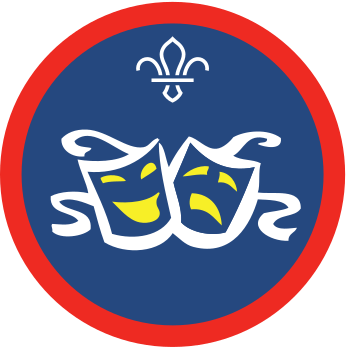
Make shadow puppets
You’ll need
- Scissors
- Coloured pens or pencils
- Sticky tape
- Wooden skewers
- Lollipop sticks
- White or light fabric sheet, or a big piece of paper
- Split pins (optional)
- A torch or lamp (a torch on a phone would work)
- Black card
Before you begin
- Use the safety checklist to help you plan and risk assess your activity. There's also more guidance to help you carry out your risk assessment, including examples.
- Make sure all young people and adults involved in the activity know how to take part safely.
- Make sure you’ll have enough adult helpers. You may need some parents and carers to help.
Planning and setting up this activity
- This activity works best over two sessions. You can use the first session to plan the story and make the puppets, then use the second meeting to briefly rehearse and then perform.
Plan your story
- Gather everyone together and explain that you’re going to make shadow puppets.
- Ask everyone to get into small groups.
- Each group should decide on a story for their puppets to tell. If you’re stuck for ideas, why not try a recreating a story you know or tell the story of an adventure your Scout group went on?
- Once they know their story, each group should choose a character for each person to ‘play’ with the puppet they make. Most groups will also need a narrator – they may want to share this role between them.
- Using black or dark card, everyone should draw the outline of their character. Remind everyone that the audience will only be able to see its shadow – they won’t see any detail that’s drawn onto it. You could carefully cut out any details though, such as eyes.
- Cut out the character, and use sticky tape to attach a skewer or lollipop stick to the back to be a handle.
- To make a moving part like an arm, cut it out separately and attach it to the main puppet with a split pin. Use the sticky tape to attach a second skewer or lollipop stick to the moving part to act as a handle to move it.
- Tie up and secure, or have two adults hold up, a piece of light fabric or large piece of white paper. A bed sheet or baking paper can work well too.
- Put the lamp or torch behind the sheet. The light should face the audience, and shine so the light hits the back of the sheet.
- Put puppets between the light and the sheet so they cast a shadow the audience can see.
- Once they’ve had a chance to practice, the groups should take it in turns to perform.
- The groups not performing should be good audience members – sitting quietly, paying attention and clapping at the end.
Reflection
Communicating well was important throughout this activity. Did you have to communicate differently when you were planning, practising, and performing? How did your communication change? When did you find communicating the easiest? How did you combine everyone’s ideas and decide on one story? What was important when narrating?
Performing can also help boost your self-esteem. Did you have to be confident to perform? Were you confident right away, or did it take time and practise? Did your group need you – did everyone have an important part to play? What were you especially good at in this activity?
Safety
All activities must be safely managed. You must complete a thorough risk assessment and take appropriate steps to reduce risk. Use the safety checklist to help you plan and risk assess your activity. Always get approval for the activity, and have suitable supervision and an InTouch process.
- Scissors
Supervise young people appropriately when they’re using scissors. Store all sharp objects securely, out of the reach of young people.
Make sure people are careful as the lamp might get hot.
- To make this activity easier, you could use templates to help people draw common shapes, such as animals or people. People could also make the puppets by using their hands to cast shadows onto the sheet.
- Everyone needs to take part in the puppet show, but not everyone needs to play the same role. It’s OK if some people would rather just move puppets, or just narrate. They could also hold the piece of fabric.
All Scout activities should be inclusive and accessible.
- You could develop this activity to meet other requirements of the Cubs Entertainer Activity Badge – for example by singing two songs in your show, or recording your show to perform later.
- You could also develop this activity for the Cubs Artist Activity Badge, for example by performing to others, and making a poster advertising the event.
- You could also theme your puppet show to meet another badge requirement, for example explaining what you must do if a stranger starts to talk to you (Beavers Safety Activity Badge or Cubs Personal Safety Activity Badge), telling others about a famous person who lived in or near your area (My World Challenge Award or Cubs Local Knowledge Activity Badge), or presenting information about space related subjects (Space Activity Badge or Astronomer Activity Badge).
Everyone should create their own story, with their own characters.


